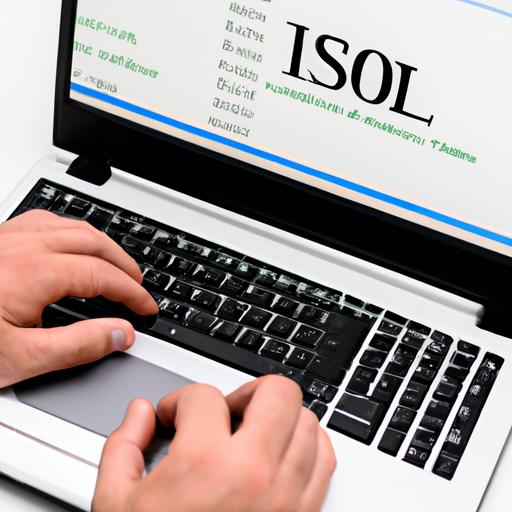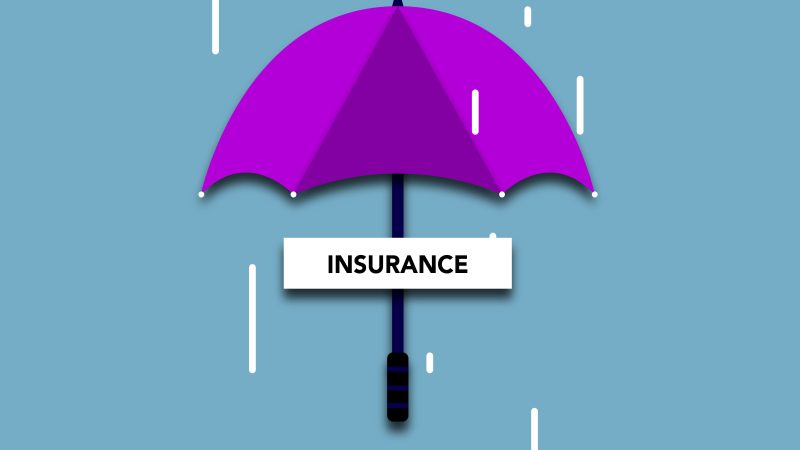ISO 27001 Controls List Excel: A Comprehensive Guide for Efficient Information Security Management 2024

Introduction: ISO 27001 Controls List Excel: A Comprehensive Guide for Efficient Information Security Management for 2024

In the contemporary digital landscape, the protection of sensitive information assumes paramount importance. Enter ISO 27001, a globally acknowledged standard for the management of information security. However, the question arises: How can one effectively coordinate and oversee the plethora of controls mandated for ISO 27001 compliance? Excel, renowned for its versatility, emerges as the solution poised to revolutionize your methodology for managing ISO 27001 controls.
Understanding ISO 27001 Controls
ISO 27001 controls constitute the bedrock of information security management, encapsulating protective measures aimed at safeguarding an organization’s invaluable assets. These controls are designed to uphold the confidentiality, integrity, and availability of data, spanning diverse domains such as technical protocols, administrative procedures, and physical security fortifications. The implementation of these controls is paramount for robust risk management and the proactive mitigation of potential threats.
The Role of Control Lists in ISO 27001 Compliance
Control lists assume a fundamental role in attaining ISO 27001 compliance, functioning as an exhaustive compendium delineating the requisite controls to fulfill the standard’s mandates. A meticulously structured control list provides a lucid synthesis of controls necessitating implementation, oversight, and sustenance. Serving as a navigational aid, it furnishes organizations with a coherent roadmap, facilitating traversal through the intricate terrain of information security management.
Harnessing Excel for ISO 27001 Controls Management
Bạn là một chuyên gia lĩnh vực bảo hiểm, hãy viết lại đoạn này theo phong cách chuyên nghiệp nhất: Excel, the widely used spreadsheet software, offers a multitude of advantages for managing ISO 27001 controls. Its customizable nature allows you to create a tailored control list that aligns precisely with your organization’s unique needs. With Excel’s familiar interface and user-friendly features, organizing, updating, and tracking control implementation becomes a straightforward task.
Excel’s versatility extends beyond organization and tracking. It boasts powerful filtering and sorting capabilities, enabling you to prioritize controls based on their criticality and effortlessly monitor their status. Moreover, Excel facilitates collaboration, ensuring seamless communication and coordination among stakeholders involved in control implementation.
By harnessing Excel’s capabilities, you can streamline your ISO 27001 controls management, enhancing efficiency, and ensuring the efficacy of your information security measures.
Stay tuned for the upcoming sections where we delve into the intricacies of creating an ISO 27001 controls list in Excel, accompanied by valuable tips for effectively managing and maintaining your control list. Together, let’s unlock Excel’s potential to fortify your organization’s information security management.
Next Section: Creating an ISO 27001 Controls List in Excel
Understanding ISO 27001 Controls

Achieving proficiency in the management of ISO 27001 controls necessitates a comprehensive comprehension of their essence and the pivotal function they serve in fortifying information assets. Let us embark upon an exploration of their intricacies:
Explanation of ISO 27001 Controls
ISO 27001 controls encompass the specific measures and mechanisms instituted to safeguard information assets meticulously. These controls are intricately crafted to attenuate risks and preserve the confidentiality, integrity, and availability of information. Through the implementation of these controls, organizations erect a resilient framework for information security management, thereby ensuring alignment with the ISO 27001 standard.
Overview of Different Types of Controls
ISO 27001 controls are commonly classified into three principal categories: technical controls, administrative controls, and physical controls.
Technical Controls
Technical controls leverage technological solutions to bolster information security. Examples include firewalls, encryption protocols, access management systems, intrusion detection systems, and vulnerability management tools. These controls are instrumental in safeguarding information assets from unauthorized access, tampering, or compromise.
Administrative Controls
Administrative controls center on the formulation and implementation of policies, procedures, and guidelines governing information security management. This domain encompasses a spectrum of activities, including risk assessment, security awareness training, incident response planning, change management protocols, and access control policies. Administrative controls serve to integrate information security seamlessly into an organization’s ethos and routine operations.
Physical Controls
Physical controls are dedicated to the physical protection of information assets. These measures encompass the establishment of secure facilities, implementation of access controls, deployment of surveillance systems, and enactment of environmental safeguards. By fortifying physical perimeters, these controls inhibit unauthorized access to sensitive areas and equipment, thereby mitigating the risks associated with theft, damage, or unauthorized disclosure.
Importance of Implementing ISO 27001 Controls
The adoption of ISO 27001 controls holds paramount importance for organizations committed to comprehensive protection of their information assets. These controls furnish a systematic framework for managing information security risks and safeguarding the confidentiality, integrity, and availability of critical data. By embracing ISO 27001 controls, organizations not only fortify their data repositories but also engender trust and confidence among clientele, collaborators, and stakeholders.
Anticipate forthcoming segments wherein we shall delve into the pragmatic aspects of crafting an ISO 27001 controls list using Excel and provide invaluable insights for proficiently managing and perpetuating your control inventory.
Next Section: Crafting an ISO 27001 Controls List in Excel
Benefits of Using an Excel Sheet for ISO 27001 Controls

Advantages of Excel for Organizing and Managing ISO 27001 Controls
Leveraging Excel significantly enhances the efficiency of managing ISO 27001 controls. Here are key advantages that render Excel an optimal tool for organizing and administering your control list:
Ease of Customization and Flexibility: Excel offers a highly adaptable platform that enables you to tailor your control list precisely to align with your organization’s unique requirements. You can structure the spreadsheet, incorporate relevant columns, and delineate control details, ensuring that your control list accurately reflects your organization’s information security needs.
Streamlined Organization and Accessibility: Excel simplifies the process of organizing your ISO 27001 controls. You can categorize controls based on various criteria, such as control types or business functions. This structured arrangement facilitates seamless navigation and swift access to control information, obviating the need to sift through extensive documentation.
Easy Customization and Adaptability
Excel excels in its exceptional adaptability, affording it the capability to cater precisely to your distinctive requirements. In crafting an ISO 27001 controls list within Excel, you leverage this customization potential to its fullest extent. Tailoring the spreadsheet’s layout, column headers, and formulas harmoniously aligns with your organization’s control framework. This meticulous level of customization guarantees that your control list faithfully reflects your organization’s unique needs.
Efficient Tracking and Oversight of Control Implementation
Excel’s robust capabilities facilitate the streamlined tracking and oversight of control implementation. With ease, you can assign responsibilities for each control, monitor the progress of implementation, and track its status. Leveraging Excel’s conditional formatting and data validation features empowers the establishment of automated alerts and reminders, thereby ensuring the punctual completion of control tasks.
Swift Analysis and Reporting
Excel’s analytical capabilities empower you to derive valuable insights from your ISO 27001 controls data. By leveraging functions such as sorting, filtering, and pivot tables, you can conduct thorough analyses and generate comprehensive reports. These reports serve as instrumental tools for identifying trends, pinpointing control gaps, and making informed decisions to enhance your organization’s information security posture.
In the subsequent section, we will guide you through the process of crafting an ISO 27001 controls list in Excel, providing practical guidance for effective management and maintenance.
Next Section: Crafting an ISO 27001 Controls List in Excel
Creating an ISO 27001 Controls List in Excel
Step-by-Step Guide for Building Your Control List
To construct a highly effective ISO 27001 controls list in Excel, follow these straightforward steps:
1. Define Your Objectives:
– Begin by clearly outlining the specific objectives for your ISO 27001 controls list. Determine the essential information you need to capture, monitor, and track for each control.
2. Create a New Excel Sheet:
– Open Excel and create a new sheet exclusively dedicated to your control list. This fresh start ensures an organized and uncluttered workspace for your controls.
3. Format the Sheet:
– Prioritize proper formatting to enhance clarity and ease of navigation. Utilize bold headings, distinct font styles, and cell shading to demarcate sections and make the list visually intuitive.
4. Capture Control Details:
– Allocate columns to capture essential control details such as Control ID, Control Name, Description, and Objective. This systematic approach provides a comprehensive overview of each control.
5. Include Status and Responsible Parties:
– Enhance your sheet with columns for monitoring the status of each control, indicating whether it is implemented, in progress, or pending. Concurrently, assign responsible parties to ensure clear accountability and ownership of control implementation.
Structuring Your Excel Sheet for Seamless Control Management
To optimize the usability of your ISO 27001 controls list in Excel, consider implementing the following structuring recommendations:
1. Employ Separate Sheets for Control Families:
– When managing a significant number of controls, it’s advisable to dedicate separate sheets for distinct control families. This organizational approach enhances clarity and simplifies navigation within the Excel file.
2. Leverage Filtering and Sorting Features:
– Utilize Excel’s robust filtering and sorting functionalities to efficiently manage your control list. Easily filter controls based on their status, priority, or responsible parties, and arrange them in a manner that aligns with your specific requirements.
3. Implement Conditional Formatting:
– Conditional formatting serves as a powerful visual aid to effectively highlight control statuses. For example, utilize color-coding to denote controls that are overdue or require immediate attention.
Incorporating these formatting and structuring techniques will transform your ISO 27001 controls list in Excel into a streamlined and user-friendly tool for overseeing and managing your information security controls.
Stay tuned for the upcoming section, where we will provide valuable tips on proficiently managing your ISO 27001 controls in Excel.
Next Section: Proficiently Managing ISO 27001 Controls in Excel
Tips for Effectively Managing ISO 27001 Controls in Excel
Best Practices for Maintaining and Updating the ISO 27001 Controls List in Excel
Efficiently managing your ISO 27001 controls list in Excel demands meticulous attention to detail and consistent maintenance. Here are some best practices to uphold the accuracy and effectiveness of your control list:
1. Emphasize Consistency: Establish and adhere to a standardized format for documenting controls within your Excel sheet. Consistent naming conventions, descriptions, and categorizations will enhance navigation and comprehension for all stakeholders.
2. Routine Reviews and Updates: Conduct regular reviews of your control list to ensure its currency. Monitor changes in your organization’s information assets, processes, and regulatory requirements, and make corresponding updates. This practice preserves the relevance and efficacy of your controls.
3. Implement Version Control: Maintain a version control system to track modifications made to the control list. This allows you to maintain a clear record of changes, ensuring transparency and accountability. Utilize Excel’s features, such as comments or revision history, to document significant alterations.
Ensuring Data Accuracy and Consistency through Regular Reviews and Audits
To maintain the integrity of your ISO 27001 controls list, it’s essential to conduct regular reviews and audits. These activities help identify discrepancies, gaps, or outdated information that could compromise control effectiveness. Consider the following steps:
1. Periodic Reviews: Establish a schedule for routine control list reviews. During these assessments, validate the accuracy and relevance of each control. Remove redundant or obsolete controls while incorporating new ones as necessary.
2. Engage Stakeholders: Involve relevant stakeholders, including IT personnel, security officers, and management, in the review process. Their insights and expertise can contribute to a more comprehensive and robust control list.
3. External Audits: Consider engaging external auditors or consultants to conduct independent audits of your control list. Their impartial perspective can uncover potential weaknesses and offer valuable recommendations for enhancement.
Utilizing Excel’s Filtering and Sorting Features for Streamlined Control Management and Prioritization
Excel offers powerful features that simplify ISO 27001 control management and prioritization. Utilize the following capabilities to enhance your control list management:
1. Filtering: Use Excel’s filtering feature to quickly locate specific controls based on criteria such as control type, status, or responsible party. Filtering allows you to focus on specific subsets of controls, facilitating monitoring and tracking.
2. Sorting: Excel’s sorting feature enables you to arrange controls according to various parameters, such as priority or criticality. This helps you prioritize controls requiring immediate attention, ensuring efficient resource allocation.
By adhering to these recommendations and leveraging Excel’s robust functionalities, you can efficiently manage your ISO 27001 controls, promoting a streamlined and effective approach. Stay tuned for the next section, where we will delve into the process of creating an ISO 27001 controls list in Excel.
Next Section: Creating an ISO 27001 Controls List in Excel
Conclusion

In summary, effective management of ISO 27001 controls is crucial for robust information security management. Excel serves as a valuable tool to streamline and enhance this process, ensuring the protection of your organization’s valuable information assets in terms of confidentiality, integrity, and availability.
Throughout this guide, we’ve explored the significance of ISO 27001 controls and the benefits of using Excel for managing control lists. By creating a well-structured control list within Excel, you can effectively navigate ISO 27001 compliance while fulfilling your information security responsibilities.
Maintaining consistency is key when managing ISO 27001 controls. Regularly review and update your control list to reflect any changes in your organization’s requirements or the evolving threat landscape. Conduct periodic audits to validate the accuracy and effectiveness of your implemented controls.
As you embark on managing ISO 27001 controls using Excel, consider leveraging the expertise of information security professionals. Their insights and guidance can offer valuable support, ensuring that your control list aligns with industry best practices and remains robust.
While implementing ISO 27001 controls may seem daunting, with the right tools and strategies, you can establish a secure and resilient information security framework. Excel, as a versatile tool, empowers you to efficiently organize, track, and monitor your controls.
Take the first step today by creating your ISO 27001 controls list in Excel. Start with a manageable scope, prioritize your controls, and gradually expand your implementation efforts. Remember that building a comprehensive information security management system takes time and dedication.
Together, let’s strengthen our organizations against cyber threats and safeguard our invaluable information assets. Visit sufn.info for additional resources and support on ISO 27001 control management in Excel.






